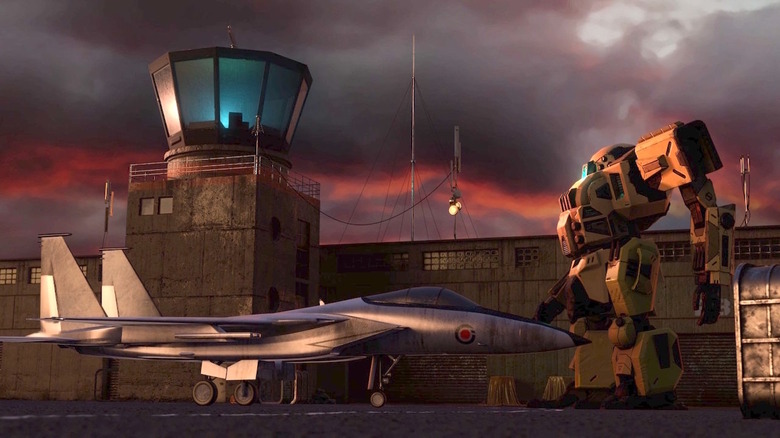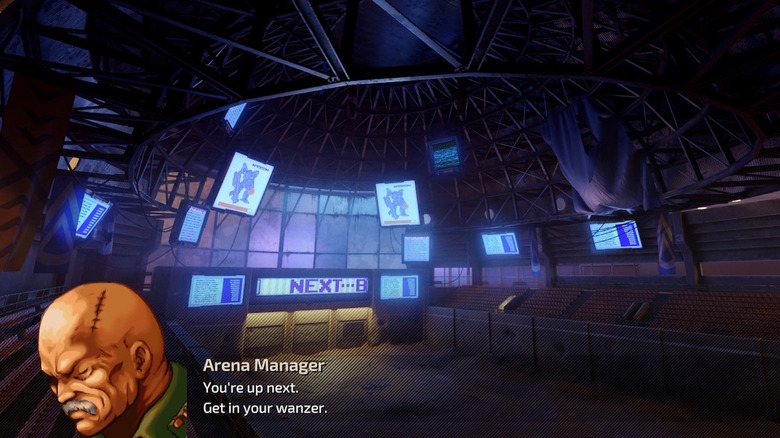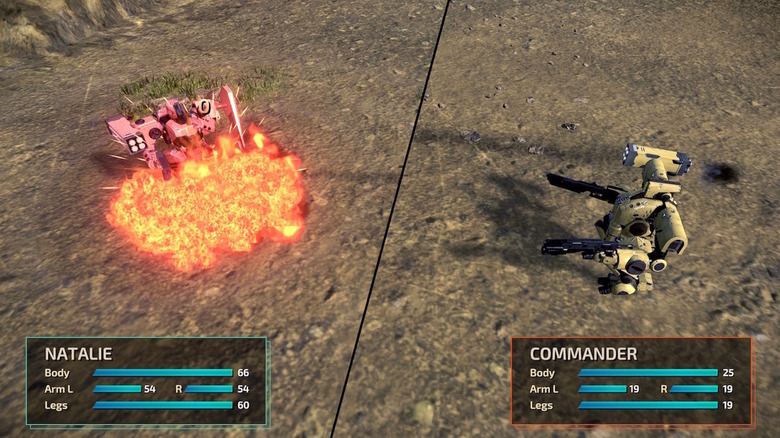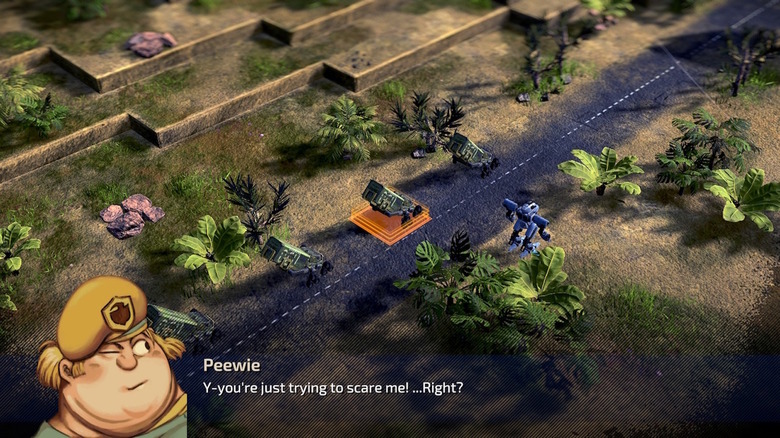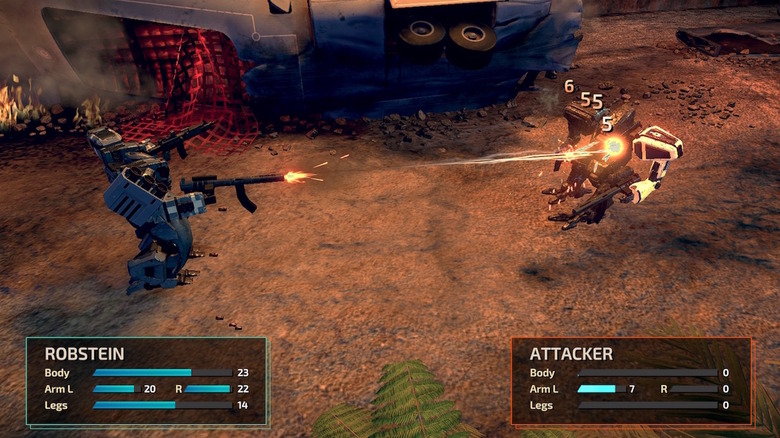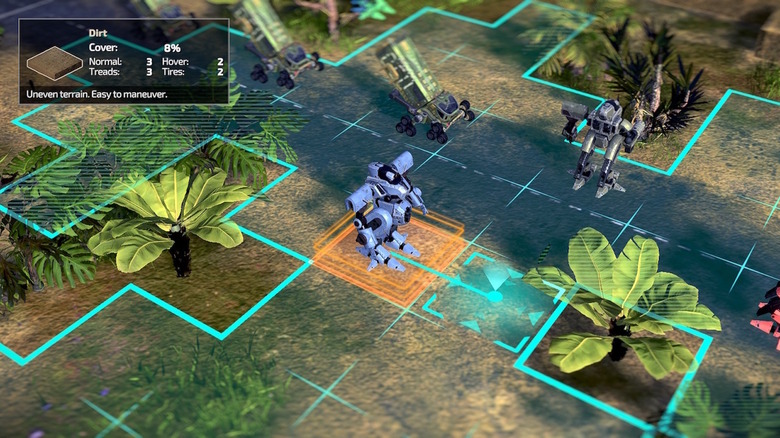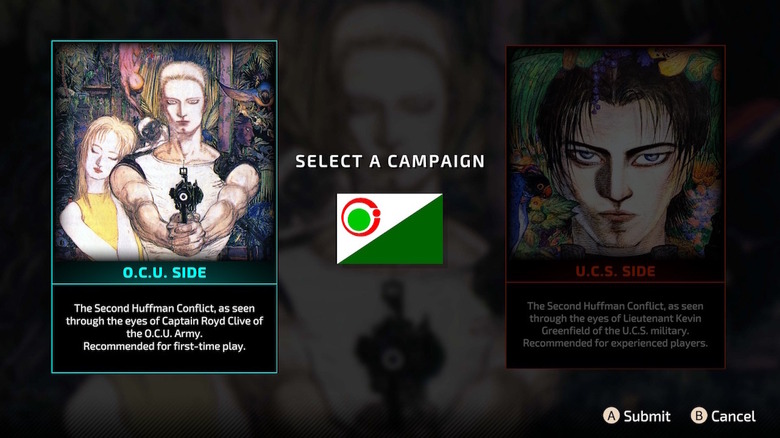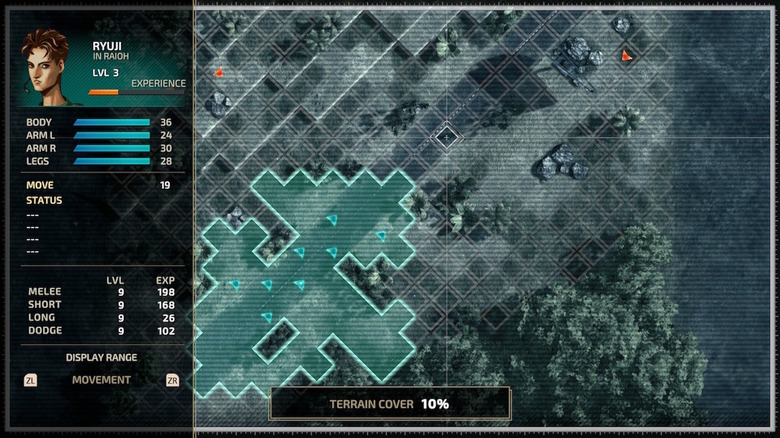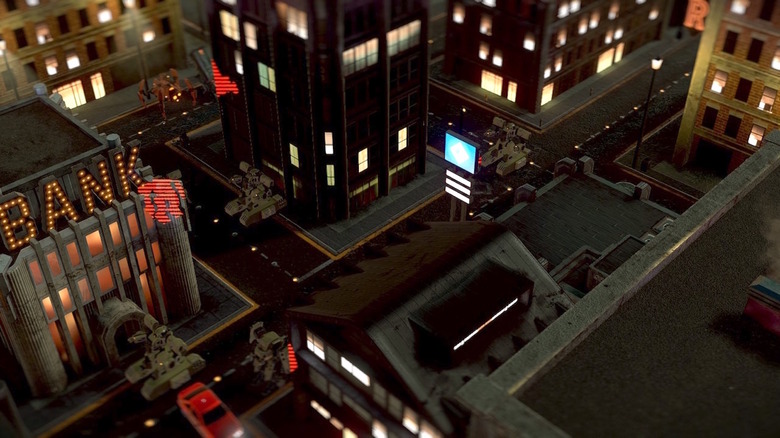Front Mission 1st: Remake (Switch) Review: I Dig Giant Robots
- Extremely difficult to stop playing
- Becomes very satisfying once things begin to “click”
- Updated play mode and visuals are nice additions
- Feels right at home in handheld mode
- Should cater more to pilot specifications
- Combat randomness can be frustrating
- Managing units between battles can be clunky
Any game that has giant robots in it — whether they're autonomous or human-piloted mecha — always has my attention. I may not play everything with big bots that catches my eye, or I may fall off some of them after a bit of playtime, but giant robots are my "ooh, shiny!" So of course I couldn't resist checking out "Front Mission 1st: Remake" on the Nintendo Switch. This game is an updated spin on the "Front Mission 1st" remake on the Nintendo DS, which was itself a remake of the original "Front Mission" for the SNES.
Thankfully, despite it being a remake of a remake "Front Mission 1st: Remake," this game doesn't feel as dated as you might expect. I mean, it definitely carries some of the... let's go with "particulars"... that typically come with older strategy games, but it still holds up pretty well despite being a glow-up from 1995. And the semi-modernized additions, such as the updated graphics and new "modern game" mode, definitely make this iteration feel like it's something more than the DS title it's pulling from.
Of course, this is still "Front Mission," which means it has its own special brand of awkwardness to contend with. These are Wanzers, after all. Bipedal (most of the time, anyway), vaguely humanoid walking tanks — they're not like speedy Gundams or Armored Cores. So the game being a bit clunky feels somewhat fitting, even if it's not intentional.
So you want to be a Wanzer pilot
If you're new to turn-based strategy games — particularly strategy RPGs — I don't think "Front Mission" would be the best place to start. The series and most of its games aren't exactly the more approachable out of all the other available options. This isn't to say they're insurmountable or unfriendly, but there's perhaps more to consider than you may expect if you're jumping in for the first time.
The basics of movement, attacking, and terrain advantages are straightforward enough. However, pilots and Wanzers are two separate entities, despite acting as a single unit on the field. So pilots gain experience based on the actions they perform, while the Wanzers are basically just equipment. But Wanzers can also be customized. A lot.
Up to six different parts (body, legs, left arm, right arm, CPU, and optional backpack) can be swapped around and there are a bunch of possible choices. And then there are up to four possible spots for weapons (one on each shoulder and one in each hand) to consider. And that's before taking things like weight limits, range, and individual pilot specializations into account.
I'm not trying to scare anyone off with all of this, but I think it's important to be aware that "Front Mission 1st: Remake" (or any game in the series, really) involves a lot of gear management. To the point that you may spend almost as much time in the garage or shop as you do on the field.
Rock'em sock'em
When you're not neck-deep in mech outfitting, you'll be trading blows with enemy forces in a number of different locations. Everyone has their own range of movement on the tile-based maps, along with their own attack ranges. Missiles are great for long-range action but tend to be heavy and have limited ammo for each mission. Guns and melee weapons aren't limited in use and are generally lighter, but most of them can only reach adjacent enemies — and using them opens you up to a retaliatory attack.
Those same rules and limitations apply to the opposition, though. So you can also choose to retaliate when they attack at close range or watch helplessly as a volley of missiles heads your way. But this is a strategy RPG, so while it's undeniably important to level up your pilots and keep upgrading your Wanzers, the tactics you use are arguably even more essential.
Are you dealing with a strong enemy? Keep your distance and pepper them with missiles. Is there a big group of hostiles headed your way? Find a narrow spot on the map and get them to funnel through so you can focus on one or two at a time. Do you keep getting bonked by long-range attackers? Get a Wanzer with high mobility to close the gap and wear them down at close range.
Missing the mark
Unfortunately, the field is where more of that telltale "Front Mission" clunkiness starts to rear its kind of irritating head. For starters, there's the terrain, which can affect a Wanzer's ability to avoid getting hit. You can easily see what stats a given terrain tile will apply if you stand on it, which is handy. But despite what you might think (as either a strategy enthusiast or as someone trying to intuit game mechanics), elevation has zero effect on accuracy — it only plays into Wanzer mobility.
Then there's what I not-so-lovingly call "the 'X-Com' factor." Much like the notorious strategy series, hit percentages in "Front Mission" often yield undesirable results. An accuracy of 80 looks good on paper, but that doesn't mean your attacks won't miss. Three turns in a row.
On top of the accuracy thing, remember what I said about Wanzers being made up of multiple parts? Well, most individual Wanzers are composed of four separate targets: body, legs, and each arm. But you can't target any of them specifically, oh no, you only target the Wanzer. The parts that get hit are up to the game to decide. So it's too bad if you really want to disable an enemy's weapon, you've damaged the legs instead. Though sometimes the dice do roll in your favor and you land a clean hit on the torso for an instant kill (if the weapon's damage is high enough). Typical "Front Mission."
Nuanced robot rumbles
This isn't to say you can't make the game's (or series') particulars work in your favor, though. One way to sidestep the irritation of missing all of your attacks or always hitting the parts you don't want is to use weapons with a spread. Sure you may not outright destroy your target, or a part, in a single attack but you'll most likely cause some decent damage to more than one location. Then another Wanzer with another spread attack might be able to destroy multiple damaged parts with a follow-up spread attack.
And when a target is already damaged and missing a few parts, the list of things to hit shrinks. Meaning instead of four random parts you might hit, there are three, two, or even one. In which case a single-shot, higher damage attack may work better because if it connects it's more likely to completely destroy a part outright.
Being more active with your own defense can also be more helpful than you might initially think. I'm generally used to playing a little aggressively when it comes to these types of games, but blocking in "Front Mission" can be very useful as it will reduce — or even eliminate — incoming damage, even coming from explosives or machine gun fire. Or you can have your hearty Wanzers surround and immobilize a strong enemy, tank any incoming damage, and chip away at it with ranged attacks.
When it all comes together
What makes "Front Mission 1st: Remake" so satisfying (and difficult to put down, in my case) is how well everything gels together once you find your groove. Admittedly it can be frustrating up to that point, but once I started leaning into my pilots' specialties and tailoring their Wanzers around those skills the fights began to get less aggravating and a lot more fun.
Pilots gain experience from attacking with specific weapon types, attacking and missing, or even being attacked. And as they level up, those points get distributed into their associated categories. So for example, if a pilot uses missiles a lot, they're going to build up proficiency with long-range weapons. Ditto with short-range weapons. Ditto again with melee weapons. And when you build their Wanzer to play to those strengths, they can become extremely formidable.
Granted, trying to remember who excels at what can be a challenge. Especially when your roster starts to reach double digits. Sure you can just start associating specific characters with specific weapon types, but it got a whole lot easier for me to remember who was best at what once I started color-coding the Wanzers. Now all my melee fighters use one color, ranged attackers another, and so on. Though I do have to wonder, what the heck were they thinking when they set up the color options? Red 0 is above Blue 0, but Blue 1 is above Red 1, and Yellow 0 comes after Green 1. It's an absolute mess.
At home in handheld mode
While I do prefer to play on the couch in front of my TV, I was pleasantly surprised by how good it feels to play "Front Mission 1st: Remake" in handheld mode. Part of that might be due to the fact that most of my experiences with the series have been via the DS remake and playing "Front Mission 3" on my Vita. I try not to think about "Front Mission Evolved." But regardless, this works pretty darn well as a portable game.
You can save in towns and cities, and you can save during your turn when in combat, so it's very pick-up-and-play friendly but also lets you stop at a moment's notice. It's also nice to finally play a somewhat text-heavy game (whether it's from story elements or menus) that I can actually read in handheld mode. There may not be any extremely useful text settings like those found in "Return to Monkey Island," but I can read all the important numbers and details on the Switch's smaller screen with no problem. It's sad how often that isn't the case, really.
And if you manage to beat it while you're out and about, then surprise! There are a lot of additional difficulty modes to unlock and try, as well as a whole second campaign with a different playable protagonist to jump into.
Front Mission in 2022
All of that stuff is fine, but how does this remake of a 2007 remake of a 1995 mecha strategy RPG fair in 2022? At its core it's still the same game — it's still "Front Mission," but more than that it's still the elder "Front Mission." The kinds of unnecessarily complex mechanics that I loved in "Front Mission 3" like force-ejecting pilots from their Wanzers aren't here, because they didn't exist when the original version of this game was made.
But while a part of me may lament the move to 3D Wanzer and map models over 2D sprites, I do think the visuals are pretty nice for what this is. They're not mind-blowing, to be sure, but the Wanzers look good, animate well, and some of the weather and lighting effects do some pretty heavy lifting to make battles more visually interesting. I wouldn't call them or the remastered soundtrack a necessity, but I do appreciate them. And it's great to have the option to switch back to the original music.
The same goes for the "modern game" mode, which gives you more control over the camera (sadly there's no way to invert the controls so up and down feel really weird) via the right stick. It also adds an overhead tactical map, which is very handy for getting a handle on where all of the enemies are on the map, how close they are, movement and attack ranges, etc.
Front Mission 1st: Remake verdict
I have a love/hate relationship with the "Front Mission" series, and by extension "Front Mission 1st: Remake," that's much like the one I have with "X-Com" and its modern re-imaginings. That is to say, I love almost everything about the games, but hate a handful of their annoying quirks when they pop up. In this case, it's primarily the randomness of Wanzer combat. But that's how these games are and have been for (oh jeez) decades now.
Honestly, while I might bemoan the game's obnoxious accuracy shenanigans and sometimes clunky design, much like defending the earth from the worst scum in the universe I just can't get enough of it. Sure I'll gripe and moan from time to time, but even while I'm rolling my eyes at Frederick missing yet another shot — you just fired a volley of two missiles for your second turn in a row, how have you not hit anything yet Fred?? — I'm already planning my next move.
What can I say? Games like "Front Mission," "Armored Core," and "Carnage Heart" (remember that old chestnut?) appeal to me on an almost cellular level. Sometimes I love micromanaging individual limbs. For me, customizing mechanized aesthetics and effectiveness are my version of watching a "strangely satisfying" video compilation. "Front Mission 1st: Remake" was $30 (on sale at the time from its usual $35 in the Nintendo store) very well spent.
Now I just have to try and be patient until the "Front Mission 3" remake comes out in 2023.
